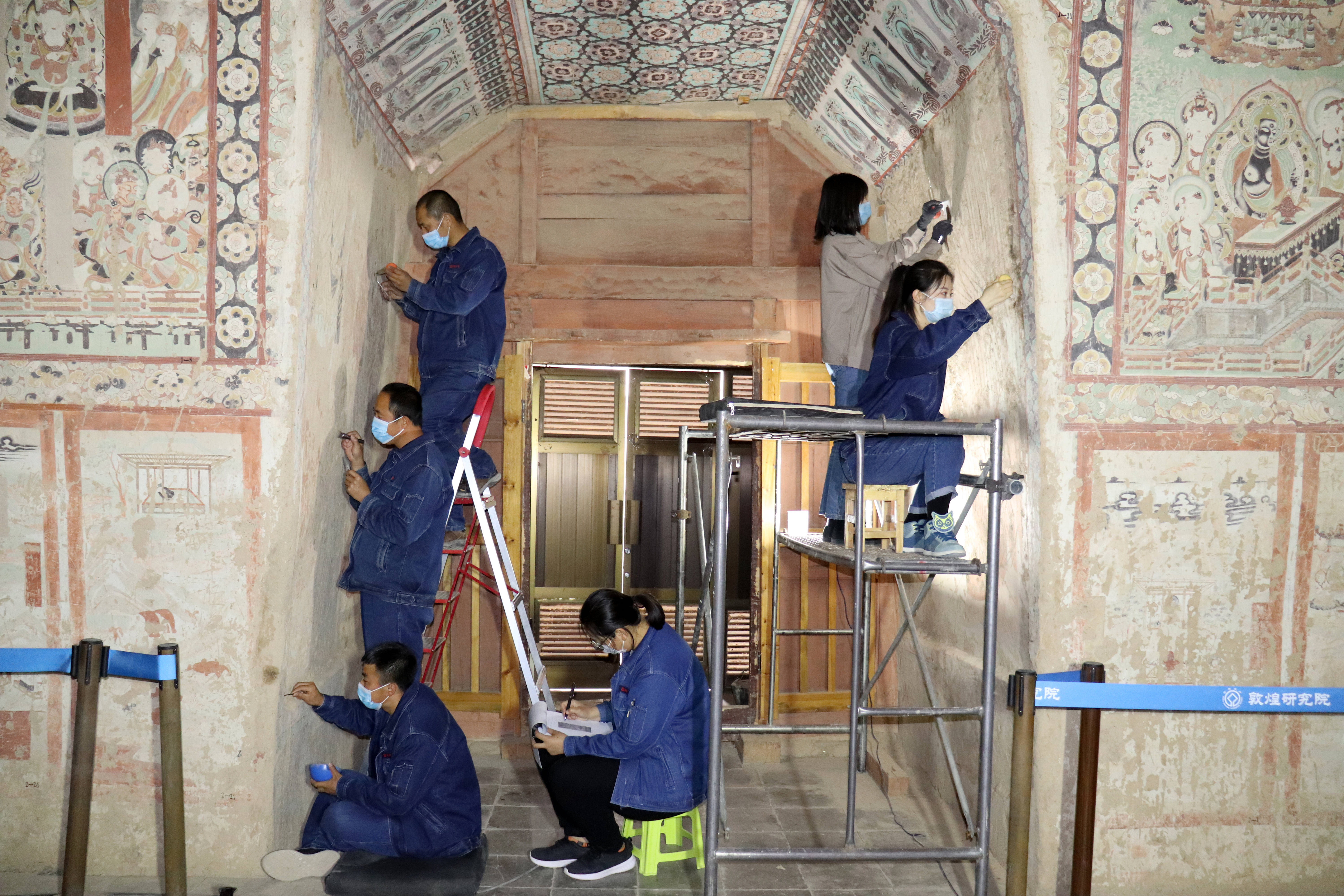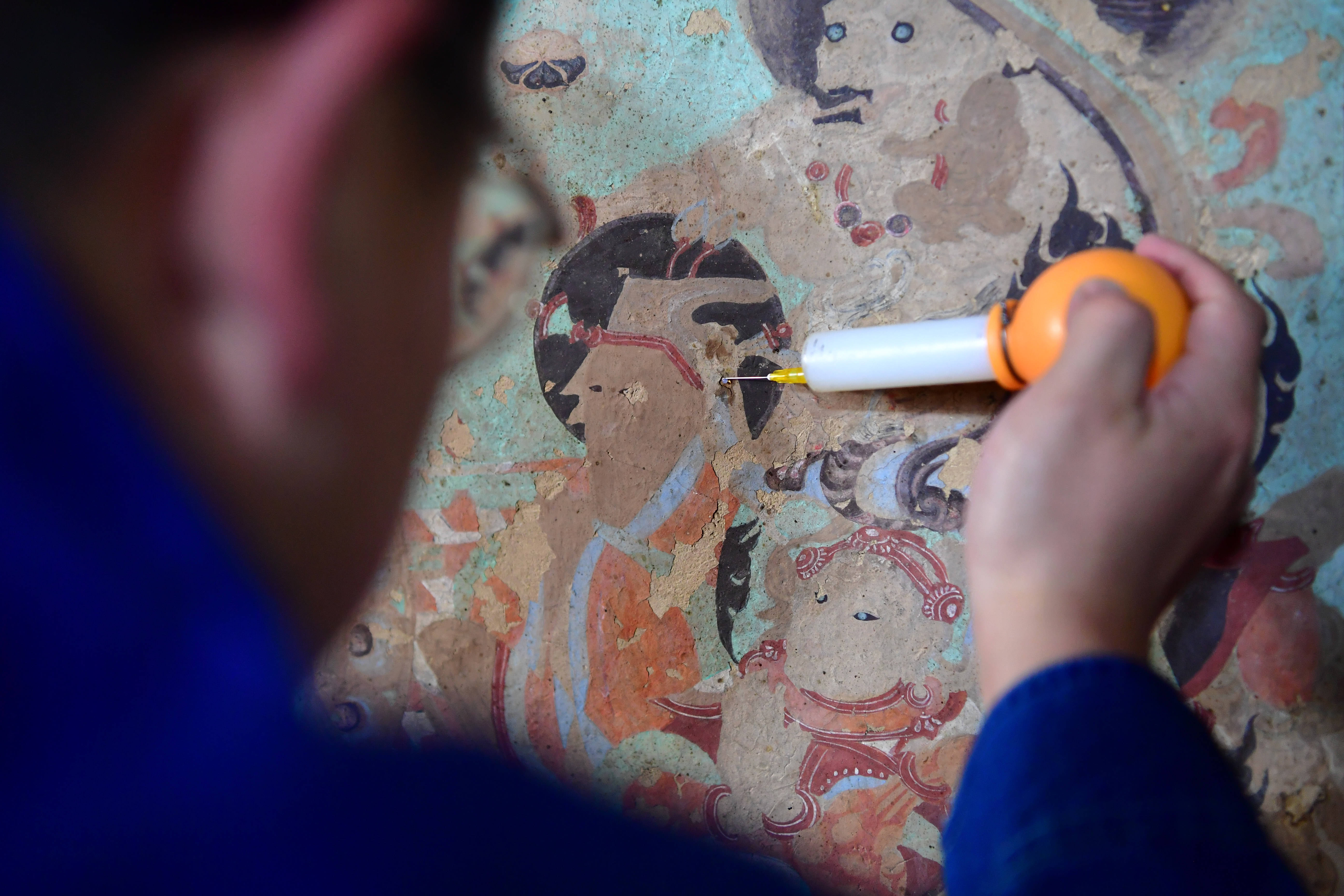The Mogao Grottoes have experienced five types of damage throughout their long history. The first type is collapse: horizontal and vertical cracks displace the cave cliffs, rendering them unstable. The second type is wind erosion: cliff erosion caused by sandstorms leads to the formation of perilous rocks and the contamination and abrasion of murals and colored sculptures, as well as the accumulation of nearly 3,000 cubic meters of sand every year. The third type is water seepage: the infiltration of atmospheric precipitation from the cracks in the thin cave top and the migration of soluble salts in the rock mass both endanger the murals and colored sculptures. The fourth type is degeneration. For example, the loss of adhesive force between the mural underlayer and the cliff results in local protrusion of the mural; improper use of glue in the pigments causes the cracking of the mural pigment layer; illumination, humidity, and co-action between the pigments can cause mural discoloration; the falling off of pigment particles in the mural pigment layer can make the hue appear dull and fuzzy; mold growth, insect collision, and excrement can pollute the mural pigment layer; the decaying or rotting wooden skeleton can cause damage to the colored sculptures. The fifth type is human damage, such as the pollution of pictures from soot and the damage to pictures caused by scribbling and scratching.

The protection of the Mogao Grottoes has developed along the right lines since the founding of the Dunhuang Academy (previously known as the Dunhuang Art Research Institute) in 1943. In 1961, the State Council declared the Mogao Grottoes as one of the first major historical and cultural sites protected at the national level and initiated a comprehensive rescuing restoration effort. In 1987, the UNESCO World Heritage Committee inscribed the Mogao Grottoes on the World Heritage List as cultural heritage. Today, the protection of the Mogao Grottoes extends beyond mere rescuing restoration efforts. It encompasses multidisciplinary research that takes into account the overall condition of the site and prioritizes prevention as a guiding principle. Protection measures include (1) grouting cracks in the rock mass or applying plaster to the surface of alkalized cliffs; (2) supporting rock masses and cracking caves with giant masonry structures to prevent collapse; (3) developing special binders and moisture-proof agents to treat murals, statues, and wooden buildings; (4) planting trees, combating sandstorms, and installing cave gates; (5) strengthening cave management and security patrol, installing a monitoring system and glass screen to prevent man-made destruction and theft of cultural relics.

 简体中文
简体中文
